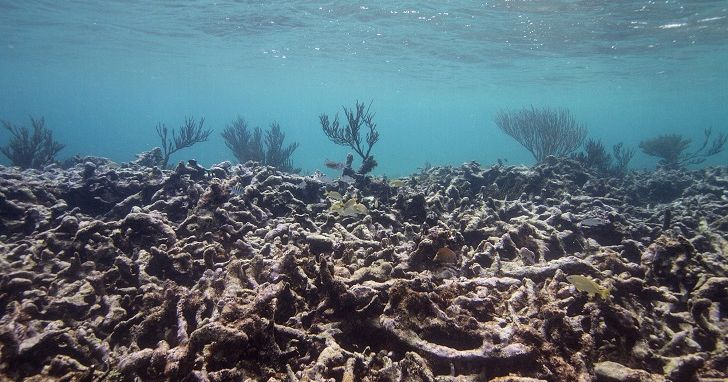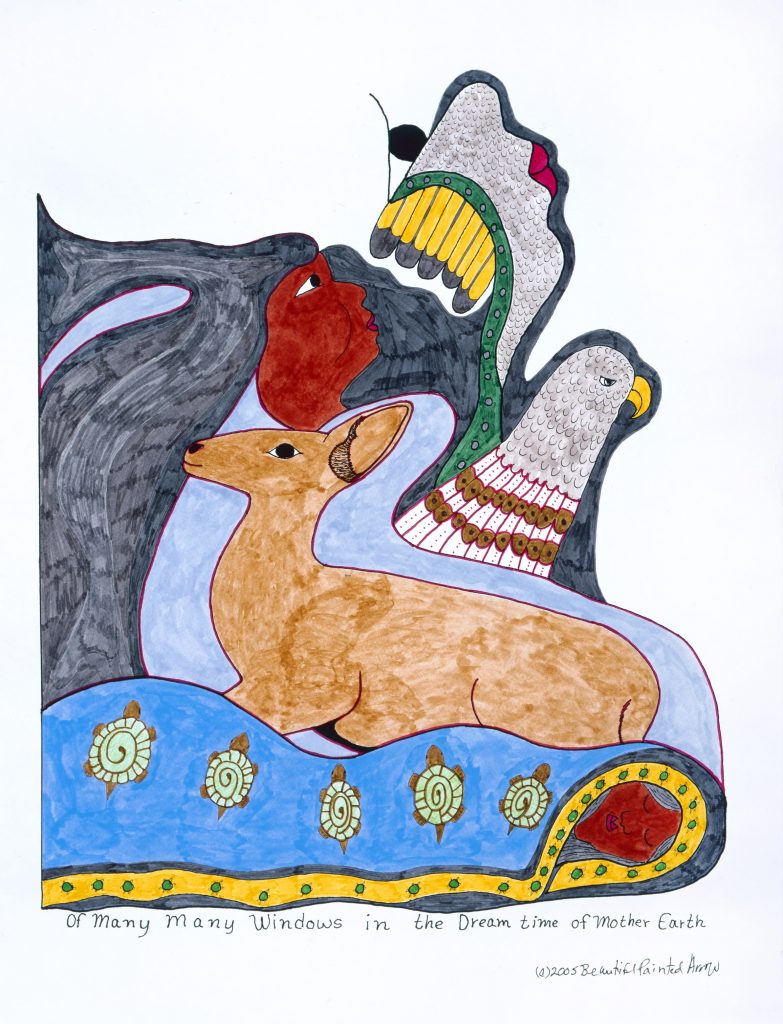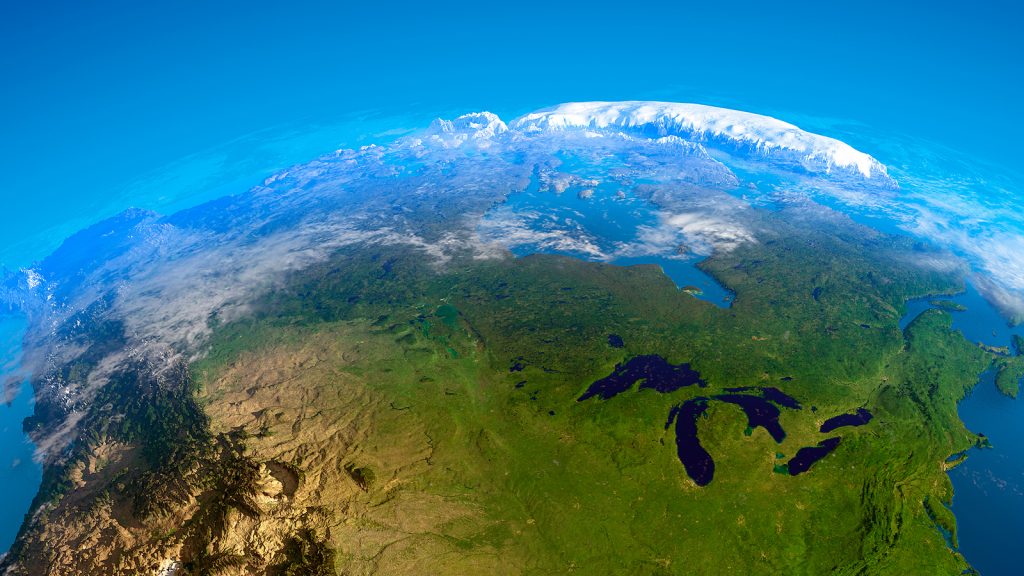First Came Unsustainability, Then Came the Coronavirus
In the fog of the Covid-19 pandemic, we might be tempted to forget that at its core, this pandemic is a deep and existential environment crisis in all of its complexity. Zoonosis (viruses that jump from animal to humans) are more probable as we encroach on animal habitats, destroy ecosystems, cause biodiversity loss, and continue to disregard climatic breakdowns with their accompanying extreme natural events. It is a crisis that goes hand in hand with food insecurity, poverty, and mass unemployment (as economies lockdown for months), armed conflict and nuclear proliferation; an increasingly dangerous threat during periods of world instability.
I am in the city of Cartagena overlooking the Caribbean sea. The country is still in lockdown due to the pandemic known as the Coronavirus, CoVid-19 (technically known as SARS-COV-2). The virus, initiated in an unregulated wildlife market in the Wuhan province in China, continues to rage across the globe. Thanks to airplanes, container ships and other transportation systems, there is a new game in town. The environmental, social, economic and political consequences of globalization are enormous. As I write this, the pandemic is only beginning to unravel, and it will take us decades to fully understand all the ramifications.
At the same time, the World Wildlife Fund’s Living Planet Report, 2020 estimates that 68% of the wildlife population plunged between 1970 and 2016. This is a horrendous loss of biodiversity. The irony and the tragedy of this pandemic is that the prevention of and best vaccine for this and all pandemic zoonoses is to protect and to conserve biodiversity. We must stop ravaging wildlife, and let us connect the dots between climate change, sustainability crises, and ecosystem destruction, among many other challenges such as food insecurity, poverty and armed conflict.
The irony and the tragedy of this pandemic is that the prevention of and best vaccine for this and all pandemic zoonoses is to protect and to conserve biodiversity.
As the virus spread and became pandemic, some nations opted for the so-called sentinel method of tracking the virus exclusively on vulnerable populations, such as the case in Sweden where they opposed its neighbors’ hard lockdowns. Some other nations, such as the cases of South Korea, Taiwan, and New Zealand opted for what may be called the syndromic method. They tracked, tested and quarantined those who tested positive, again rejecting any hard lockdown. Germany opted for random testing and lockdown. Most South American nations, with the notorious exception of Brazil under Bolsonaro’s presidency, also opted to lockdown with devastating economic results, much like in other parts of the world. Yet, not having a vaccine at hand, there was not much else to do, given the fragile medical infrastructure of the region.
The best crisis managers have been democratically minded (right and left) women such as Jarden (New Zealand), Merkel (Germany), Tsai Ling-Wen (Taiwan), Frederiksen (Denmark) to mention only a handful.
This point is particularly important because it is a fallacy to think that the virus is a big equalizer. Quite the contrary. Much like climate change, this pandemic has exacerbated all kinds of social, economic and even political divisions, falling harder on the have nots than those that have; falling harder on those poor, vulnerable and marginalized groups. A study of 17 million people in the United Kingdom is quite telling. As the UK is a multiracial, multiethnic, multicultural and highly socially unequal society, this study is representative. Some of the results show that patients older than 80 were 20 times more likely to die than those bellow age 40. It also found that conditions such as obesity, asthma and diabetes rendered individuals more vulnerable. The findings also tell us that, “person’s chances of dying also tended to track with socioeconomic factors such as poverty”.[1] In the USA, the same New York Time article found that Latinos and African-Americans are 3 times more likely to be infected as whites, and twice as liker to die. In short entrenched structural and historical inequalities disproportionally burden racial, ethnic and poor minority groups.
Power, financial and technological inequalities among nations also impose their toll. In other words, world geopolitics matter. The pandemic has been hard for the world economy, no question about that. For developing and emerging nations, however, the economic impact has been devastating. The World Bank estimates that CoVid-19 will push between 71 and 100 million people into extreme poverty. To quote: “This represents the first increase in extreme poverty since 1988, effectively wiping out progress made since 2017.”[2] In Latin America between 2000-2020, inequality fell to its lowest point in its recorded history. In Colombia alone, the poverty rate was cut in half to 27%, from 2002-2018.[3] These are pre-pandemic numbers. A new count is necessary.
Meanwhile, critically important issues such as climate change, food insecurity, biodiversity loss have become “collateral damage.” In the fog of the pandemic, we are not connecting the dots. This is a deep and existential environmental crisis. As long as structural reform of all fundamental human/social systems remain elusive, humanity itself is clearly a deadly virus and one that is relentless, spreading to all ecosystems, threatening biodiversity, pushing the climate to a breakdown point. We are the asteroids that drove the dinosaurs to extinction. The safest and most effective vaccine for this and all zoonoses is habitat and biodiversity conservation.
What Happened to Rio?:
In 1992, The United Nations Conference on the Environment and Development gathered in Rio de Janeiro. Like many other United Nations summits, implementation of any agreed upon resolution, has been elusive. So, whatever happened in Rio, stayed in Rio. It is important, however, to remember some unique features of this summit, which so many, including myself, welcomed enthusiastically.
 In June, 1992, the UNCED gathered 185 member states, multiple non-governmental organizations, academics and scientist of all fields, activists, indigenous leaders and more. This summit which became known as Earth Summit produced Agenda 21. In turn, this Agenda produced the Convention on Biodiversity; for the first time biodiversity played a central role. There was much enthusiasm. Historically and geopolitically, the Cold War was over. The Earth Summit was the first gathering in a post-Cold War world. The symbolism of such a gathering was not lost to journalists, scholars, and other commentators. Imagine all the potential for world peace! Competition for world domination between the Soviet Union and the USA defined the world order in the post-World War II. From the Korean War, 1950-1953, the Vietnam War, 1955-1975, to the Cuban revolution, 1959, and the Cuban missile crisis, 1962 (perhaps the most dangerous confrontation between the two major Cold War powers), the logic of the Cold War dictated historical events. Cold War enemies struggled for supremacy on all continents, ending with the dissolution of the Soviet Union, 1991. Competition was not only limited to the arm race. It was ideological, cultural, technological, scientific. Not even the moon or outer space were spared.
In June, 1992, the UNCED gathered 185 member states, multiple non-governmental organizations, academics and scientist of all fields, activists, indigenous leaders and more. This summit which became known as Earth Summit produced Agenda 21. In turn, this Agenda produced the Convention on Biodiversity; for the first time biodiversity played a central role. There was much enthusiasm. Historically and geopolitically, the Cold War was over. The Earth Summit was the first gathering in a post-Cold War world. The symbolism of such a gathering was not lost to journalists, scholars, and other commentators. Imagine all the potential for world peace! Competition for world domination between the Soviet Union and the USA defined the world order in the post-World War II. From the Korean War, 1950-1953, the Vietnam War, 1955-1975, to the Cuban revolution, 1959, and the Cuban missile crisis, 1962 (perhaps the most dangerous confrontation between the two major Cold War powers), the logic of the Cold War dictated historical events. Cold War enemies struggled for supremacy on all continents, ending with the dissolution of the Soviet Union, 1991. Competition was not only limited to the arm race. It was ideological, cultural, technological, scientific. Not even the moon or outer space were spared.
Now a peace dividend was feasible and biodiversity a winner. Agenda 21 was adopted by 178 governments. Full implementation of Agenda 21 was reiterated in in the World Summit on Sustainability Development in Johannesburg, 2002.

As the WWF’s 2020 report shows, only 25% of the planet can be considered “wilderness”. The greatest losses have been in Latin America and the Caribbean where animal population dropped 94% between 1970 and 2016.
To be clear in the strongest possible way: CoVid-19 is not a natural disaster. Whether we talk about Severe Acute Respiratory Syndrome (SARS-1), Middle East Respiratory Syndrome (MERS) or today’s SARS-2, we are talking about entirely human-made calamity. Meanwhile, as the world is consumed with the CoVid-19 pandemic, critical political issues have gone unnoticed or under the radar: China’s notorious secrecy has not been forthcoming about the virus; China-USA relations are at the lowest point in the course of the 21st century. In fact, it is a meltdown and gone are the days when rapprochement with China, a pragmatic bipartisan policy of the 1970’s, can be reignited.
The tools to stop zoonoses are at hand: biodiversity preservation, habitat protection, ecological conservation. Short of addressing this environmental crisis in all of its complexity, including climate change, sustainability, food security, poverty and war, all the lockdowns and measures of today are delays for the next, and the next, and the next human-made disaster.
[1] The New York Times, July 9, 2020. Page A1.
[2] Worldbank.org/en/topic/poverty/brief/projected-poverty-impacts-of-covid-19.
[3] The New York Times, July 11, 2020. Page 1A.






